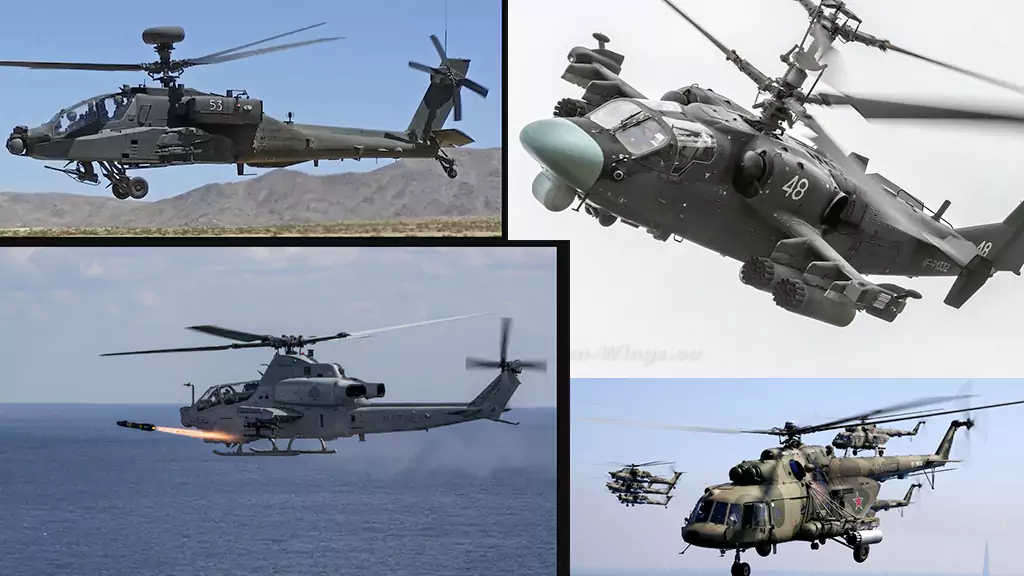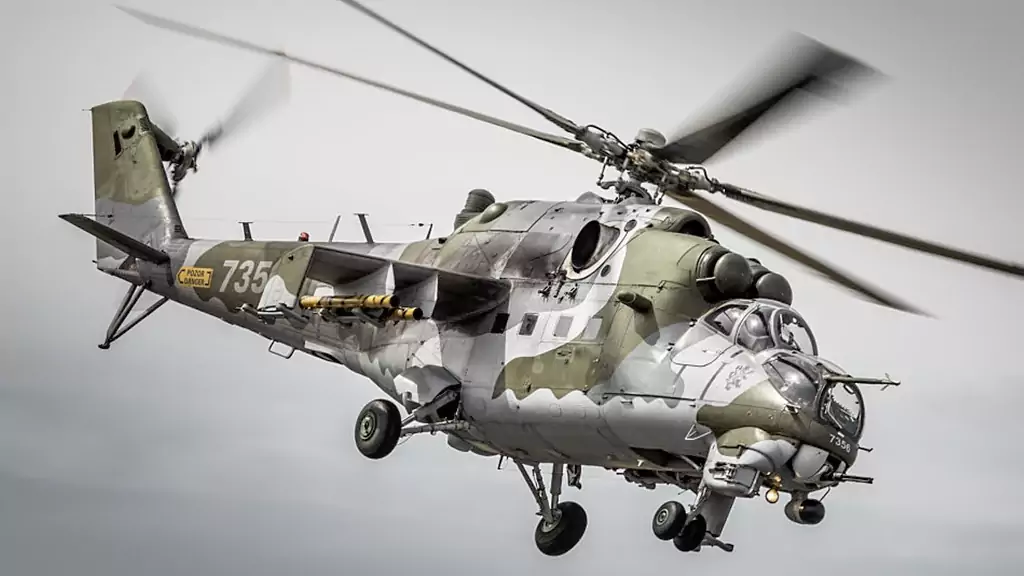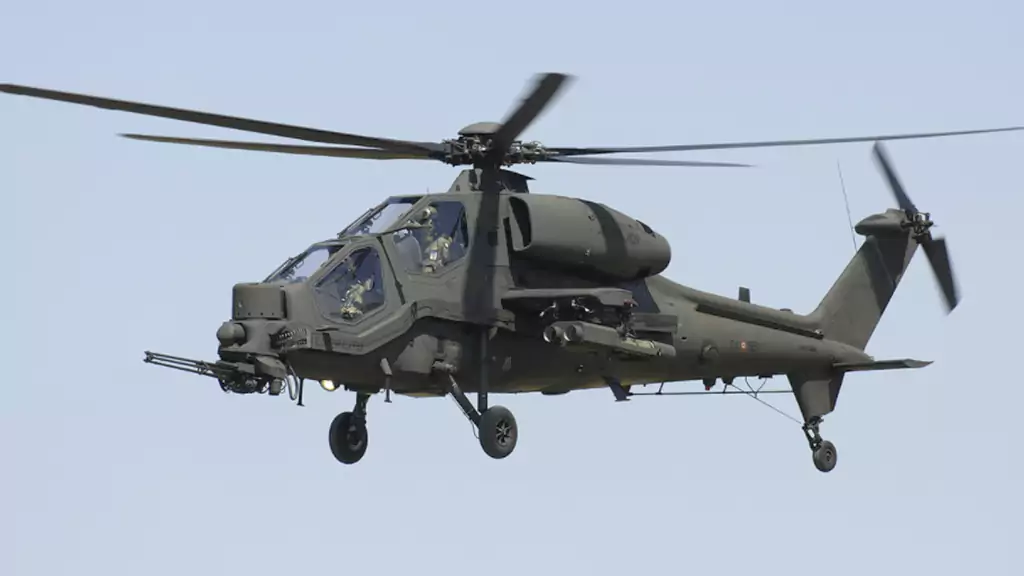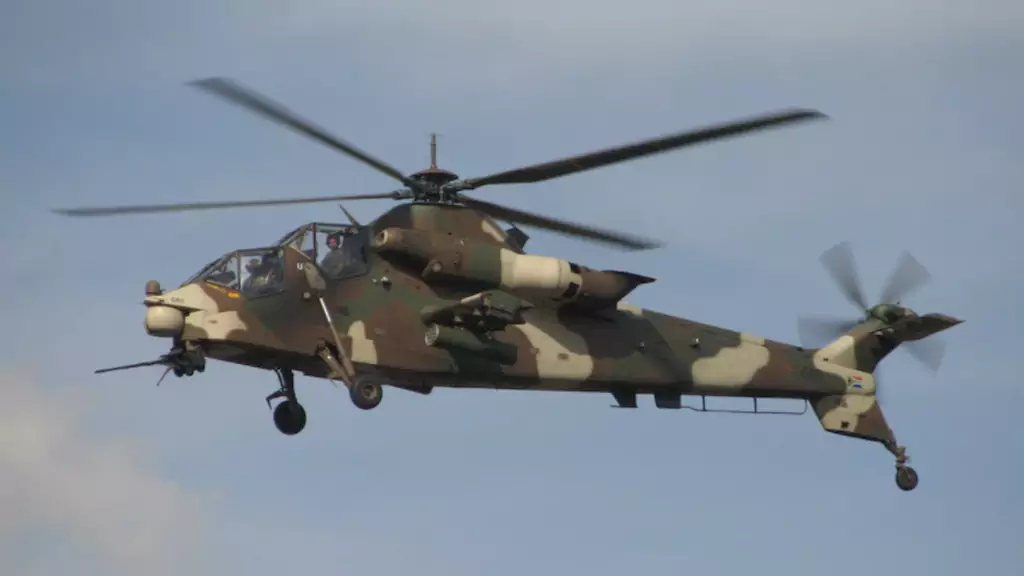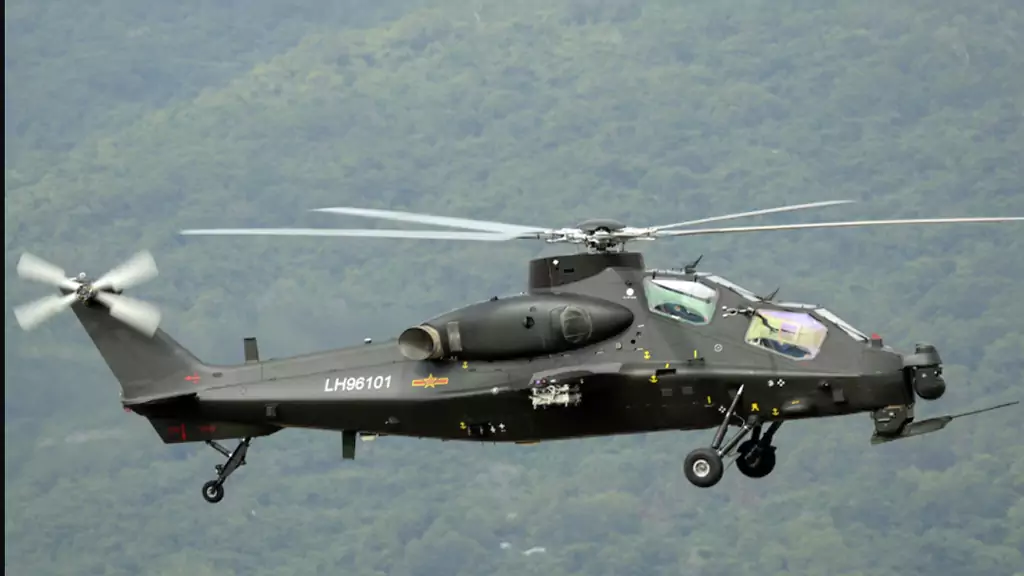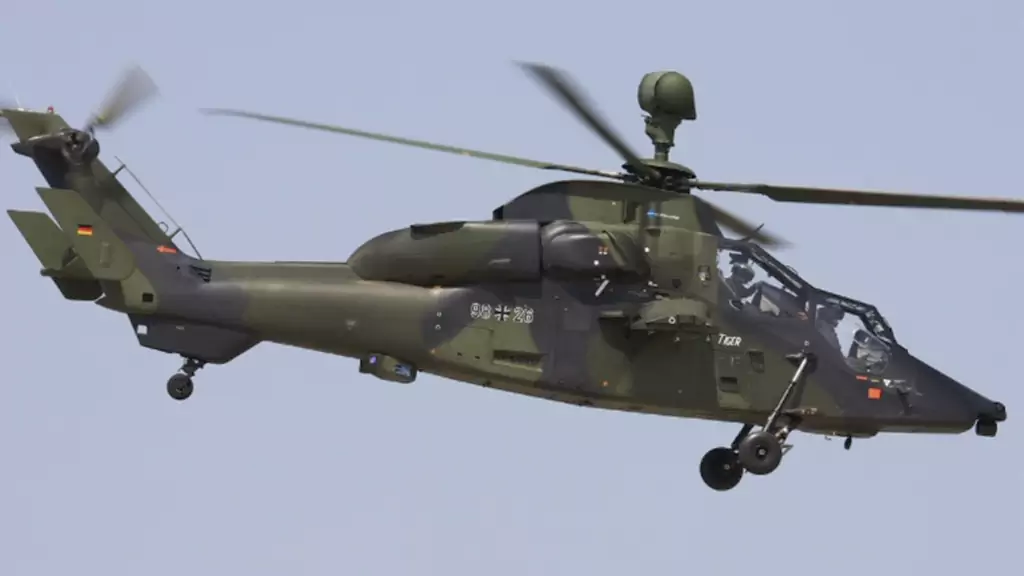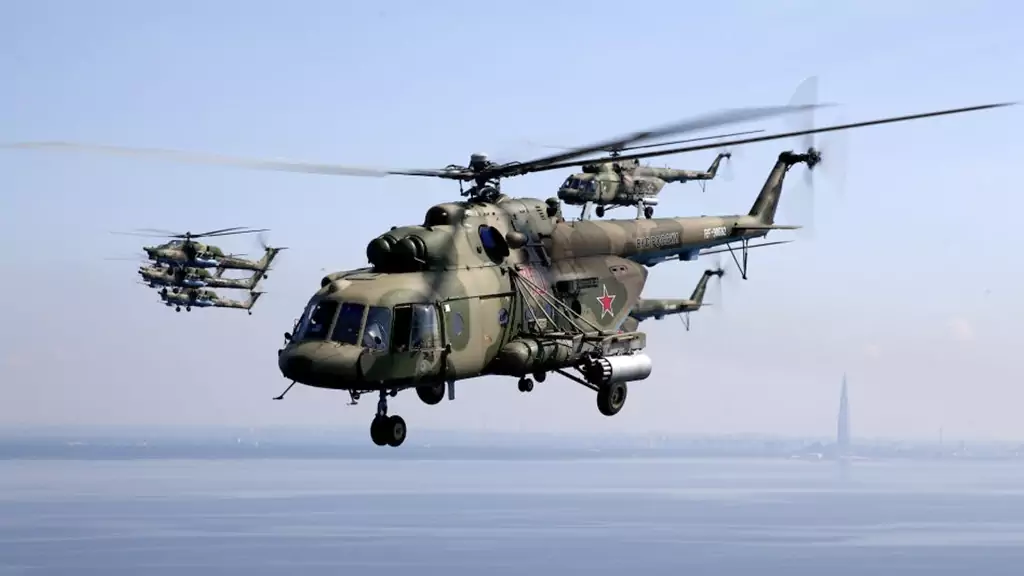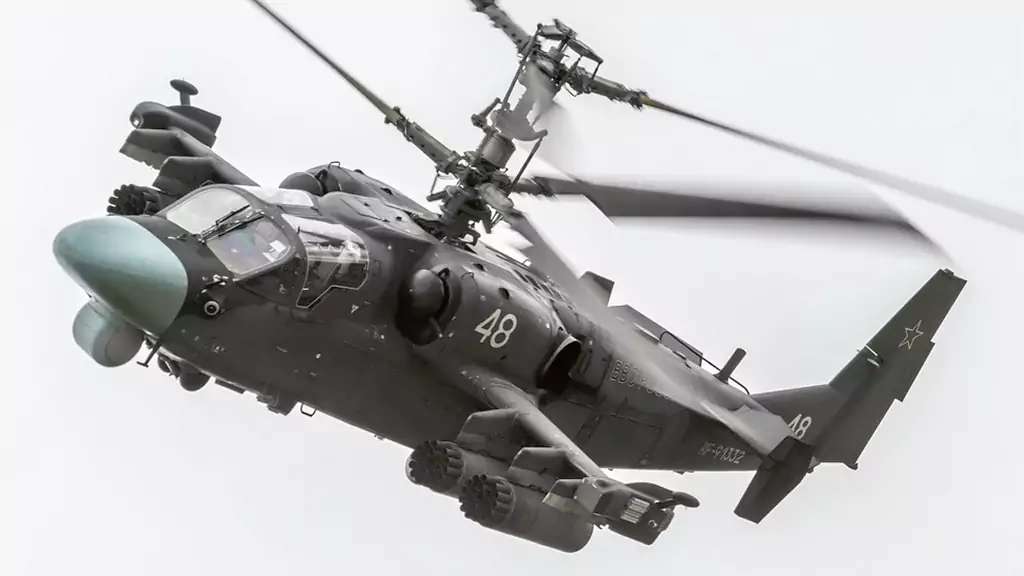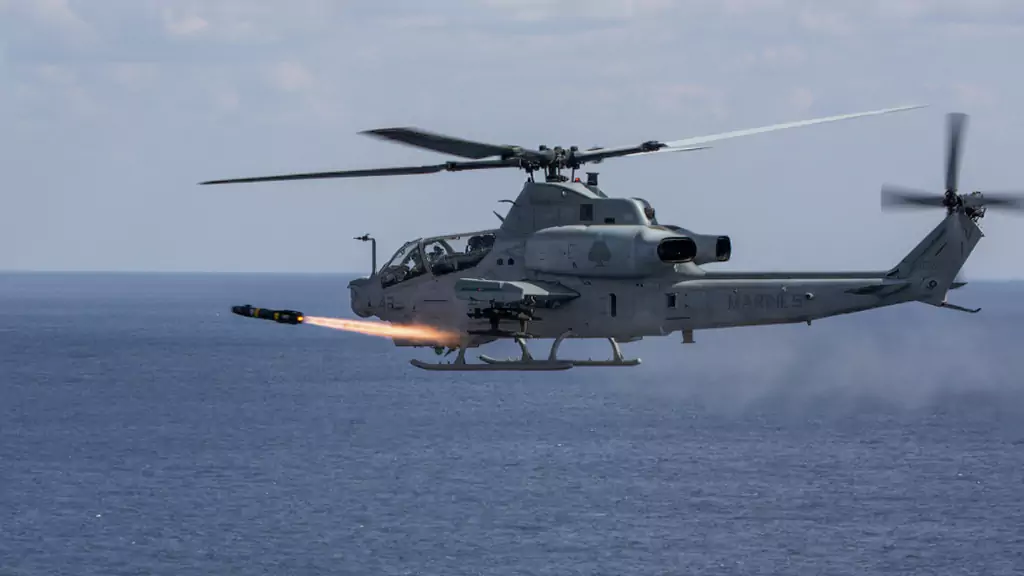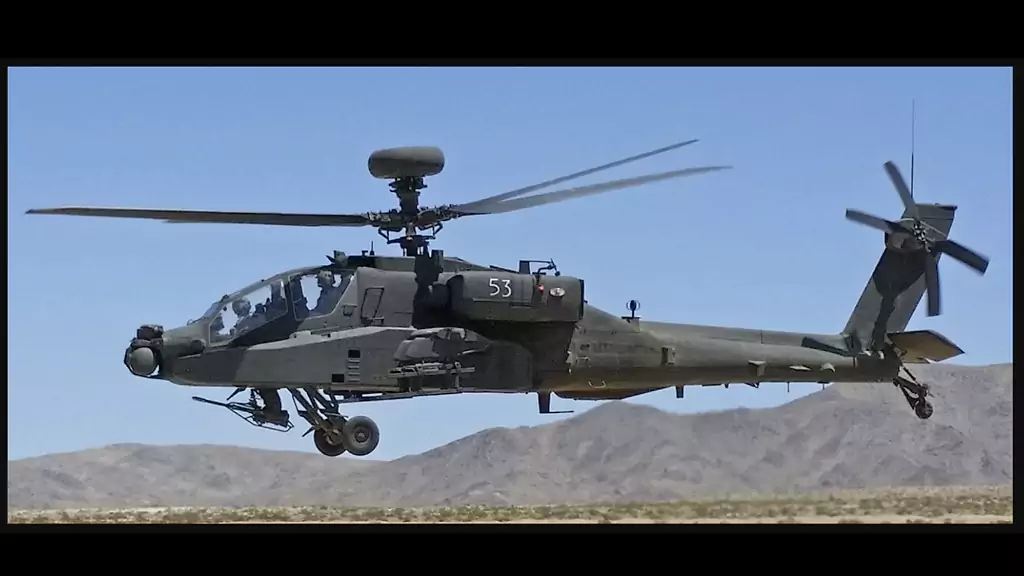Best Helicopters- Military helicopters are an important tool for the air-based Armed Forces.
They are used for a variety of purposes, such as transporting troops and supplies, providing air support, and performing search and rescue missions.
There are many different types of military helicopters, each designed for a specific purpose.
In this blog post, we will take a closer look at some of the 9 best helicopters for military attacks and discuss their capabilities.
The 9 Best Helicopters for Military Attacks in the World
The military is ever changing. New technology is being developed every day. We are here today to explore the best helicopters for military attacks in the world.
This list will cover some of the more popular models and what they offer to militaries around the globe. Some of these helicopters were designed specifically for combat purposes, while others have been adapted from civilian use.
The majority of them are used by countries with large budgets or smaller countries that buy them on loan or lease payments.
One thing that remains true across all these helicopters is their speed and maneuverability. This makes it easier to dodge incoming fire and make quick getaways after a successful attack!
So without further ado, let’s take a look at some awesome choppers!
1. Mil Mi-24 Hind (Russia)
The Mi-24 Hind is a Soviet helicopter that was designed to replace the previous Mi-8, which was made obsolete due to its low speed and lack of armor.
The Russian army decided to focus on gunships rather than transport because assault actions require much more mobility than transport, and the helicopter was not intended to be used as a transport.
The Hind was first introduced in the 1970s and has been upgraded many times since then.
Between 1978 and 2013, more than 2,300 Mi-24 helicopters were produced for military purposes and exported to about 27 different countries.
The Mil Mi-24 (NATO reporting name: Hind) is a four-blade, twin-engine attack helicopter with a tandem cockpit for a pilot and gunner.
It was produced by Mil’s Moscow Helicopter Plant and has been in service since the 1970s.
The Mi-24 Hind is heavily armored and can carry up to eight tons of weaponry on five external hardpoints. It is powered by two Isotov TV3-117 turboshaft engines.
The Hind’s primary missions are close air support, anti-armor operations, and armed escort. It can also be used for aerial reconnaissance, troop transport, and medical evacuation.
The Mi-24 has been upgraded many times over the years and is still in service with the Russian armed forces as well as being exported to many different countries.
The Hind has seen combat in multiple wars all over the world, including Angola, Afghanistan, Chechnya, and Ukraine.
In several wars, it is considered a very deadly adversary, even to attack helicopters such as the Apache AH-64.
The powerplant consists of two Isotov TV3-117 turboshaft engines. The Mi-24 can carry up to eight tons of armament, including 57 mm rocket pods, air-to-air missiles, and unguided bombs on external hardpoints under the wings and fuselage.
The Mi-24 Hind is a very heavily armed helicopter that has two different armament options. The first is a 12.7 millimeter Yak-B four-barreled gatling gun that can be found mounted in the nose.
The other option is to mount an external pod with two 9M17 Falanga anti-tank missiles.
The helicopter also features two underwing hardpoints for rocket pods and two fuselage hardpoints for bombs.
The Mi-24 Hind is a very versatile helicopter that has been used in many different combat situations all over the world. It is heavily armored and can carry a lot of armament, which makes it a very deadly adversary.
The Hind is still in service with the Russian armed forces and is also being exported to many different countries. The Hind has been upgraded many times over the years, but still remains a very deadly gunship.
2. Agusta A-129 Mangusta (Italy)
The Agusta A-129 Mangusta (Italian for “Mongoose”) is an attack helicopter originally designed and produced by Agusta (later merged into AgustaWestland, now Leonardo).
It has the distinction of being the first attack helicopter to be designed and produced wholly in Europe.
The primary missions of the A-129 are anti-armor and anti-helicopter warfare, but it can also be used for air-to-air combat, reconnaissance, and search and rescue.
The A-129 has a combat radius of nearly 300 kilometers, making it an extremely versatile weapon system.
The Mangusta entered operational service with the Italian Army in May 2005, the Pakistani Army in August 2008, and the Egyptian Army in December 2014.
The Agusta A-129 was developed to meet a requirement of the Italian Army for an attack helicopter which could also be optionally armed for airborne combat helicopter (ACTH) missions.
Development began in 1984, and the first of three prototypes made its maiden flight on December 11, 1990.
The A-129 was selected as the winner of the Italian Army’s ACTH competition in 1992, and a production order was placed for 60 helicopters in 1995.
The first pre-production helicopter flew on November 9, 1997, and initial operating capability was achieved in May 2005.
The A-129 has been exported to Pakistan and Egypt, and a total of over 230 helicopters have been built.
The A-129 Mangusta is a highly agile helicopter, thanks to its two turboshaft engines, which give it a top speed of 309 kilometers per hour.
It is also equipped with a state-of-the-art helmet-mounted sight system, which allows the pilot to aim weapons and sensors simply by looking at the target.
The A-129 has a range of nearly 300 kilometers, allowing it to be used in a wide variety of roles. It can carry a payload of up to 1,500 kilograms, making it an extremely powerful weapon system.
The A-129 Mangusta has proven to be an extremely successful attack helicopter and has been adopted by the Italian Army, the Pakistani Army, and the Egyptian Army.
It is fast, agile, and highly capable, making it one of the best helicopters in the world.
3. Denel AH-2 Rooivalk (South Africa)
The Denel AH-2 Rooivalk is a South African attack helicopter, manufactured by Denel. The Rooivalk was designed in the early 1990s as a dedicated attack helicopter.
The helicopter is based on the Aérospatiale Gazelle helicopter airframe but with several modifications, including a new engine, composite rotor blades, and a redesigned cockpit.
The Rooivalk entered service with the South African Air Force in April 2004.
The Rooivalk has been deployed by the South African Air Force in several peacekeeping and humanitarian operations, including deployments to the Democratic Republic of Congo, Burundi, and Ivory Coast.
In 2008, two Rooivalk helicopters were deployed to support Operation Jaguar, the Nigerian military’s counter-insurgency campaign against Boko Haram.
In 2011, Rooivalk helicopters were deployed to support the United Nations peacekeeping mission in Libya.
The Denel AH-2 Rooivalk is a highly capable attack helicopter and has been proven in combat.
The Rooivalk was designed to survive heavy fire from armored vehicles and has proven its ability to do so against Somali militants and Boko Haram insurgents in Nigeria and the Democratic Republic of Congo, respectively.
Against less well-protected opponents, such as insurgent forces, the helicopter is still highly capable; it can destroy these opponents using rocket pods and cannon fire.
Since its introduction into service in 2004, the Rooivalk has been continually upgraded to extend its service life and keep it relevant as a modern attack helicopter.
In 2010, South Africa’s Armscor awarded a contract to a local company, Mokopa Aviation Technologies, for the development of a new indigenous anti-armor missile system for the Rooivalk.
The missile, designated the Mokopa missile, was successfully test fired in 2011.
4. Z-10 (China)
According to many experts, the Z-10 is the world’s best helicopter. It was developed by China and first flew in 2003. The Z-10 is a medium-sized attack helicopter that is used for anti-tank and air-to-air combat.
It has a four-blade main rotor and a five-blade tail rotor. This helicopter’s armaments include machine guns, anti-tank missiles, air-to-surface missiles, and rockets.
The Z-10 can engage targets while moving at speeds of up to 320 kilometers per hour (200 miles per hour). One unusual feature of this attack helicopter is its cabin. Its rotating turret can be used by an infantryman under armor.
This attack helicopter is also equipped with a laser designator, which is used to guide the missiles fired by the Z-10. Another unique feature of this attack helicopter is its ability to take off and land on roads or highways.
The Z-10 was developed by China based on technology developed for the Eurocopter Dauphin helicopter. The first flight of the Z-10 took place in 2003, and it entered service with the Chinese military in 2009.
The Z-10 is currently in use by the Chinese military and has also been exported to Pakistan. The Pakistan Army has ordered around 60 of these helicopters.
The Z-10 is also being considered for export to other countries, including Thailand and Malaysia.
5. Eurocopter Tiger (France & Germany)
The Eurocopter Tiger is a two-seater attack helicopter manufactured by Airbus Helicopters. It was jointly developed by France and Germany and is used by both countries’ militaries.
The Tiger has been in service since 2003 and has seen action in several conflicts, including the Afghanistan and Iraq wars.
The Tiger is a twin-engined helicopter, powered by a single MTU Turbomeca Makila 1A1 turboshaft engine. It is intended for use in hot and humid environments, and it can operate at altitudes of up to 6,500 meters.
The Tiger can carry a total of 16 anti-tank missiles, including 8 HOT3/HOT2 anti-tank guided missiles or 12 HOT1/TOW/Milan anti-tank guided missiles.
The Tiger can also carry a 30mm cannon, which has an effective range of 1500m with both high-explosive rounds and Armour Piercing Discarding Sabot (APDS) rounds.
The main fuselage is heavily armoured and is also fitted with an infrared suppression system to reduce the heat signature of the engine.
The Tiger has been praised for its capabilities and has been called “the world’s best attack helicopter.” It is currently operated by the French Armée de l’Air, the German Bundeswehr, and the Royal Netherlands Air Force.
In 2008, the French Army took delivery of their final Tiger, bringing total deliveries to 287. The last of 224 Dutch Tigers was delivered in 2009.
The Tiger also gained international recognition for its capabilities when it was deployed during France’s intervention in Mali in 2013, where it proved to be an invaluable asset against ISIL forces in Northern Iraq.
They proved their worth in mountainous environments, using terrain to conceal themselves and provide cover for offensive operations.
They were also used to quickly transport troops into combat areas, where they could drop off soldiers before returning to base.
The Tiger has been used in military operations all over the world, including Afghanistan, Mali, Iraq, Somalia, and Libya. It is considered to be one of the most successful multi-purpose, multi-role combat helicopters in use today.
The Tiger is currently being upgraded by Airbus Helicopters as part of the HADR (Hélicoptère d’Appui Destruction Renforcé/Destroyed-Enhanced Support Helicopter).
The upgrade includes a new and improved targeting and surveillance suite, as well as a wire-strike protection system.
The Tiger has been ordered by the Chilean Army (12), Egyptian Air Force (20), and Royal Thai Army (12). The French Army is currently in the process of upgrading 35 aircraft to the HADR standard.
6. Mil Mi-28 (Russia)
The Mil Mi-28 (NATO reporting name “Havoc”) is a Russian all-weather, day-and-night military attack helicopter. It was designed by the Mil Moscow Helicopter Plant and manufactured by Rostvertol.
The Mi-28A prototype first flew on December 10, 1982. The first production helicopters were delivered to the army for evaluation in 1987.
The initial production version was named “Night Hunter” (Russian: авки).
It is a dedicated attack helicopter, derived from the Mil Mi-24, that adds a number of refinements, including twin engines and a coaxial rotor system to provide extra lift capacity.
The Mi-28 has a crew of two: a pilot and a weapons operator. It is armed with a 30 mm cannon, rockets, and guided missiles. It can also carry bombs.
The Mi-28N Night Hunter variant added a Radar Warning Receiver (RWR), a FLIR turret, and HOTAS controls.
The Mil Mi-28 has seen considerable action in the Russia-Georgia War.
The Mi-28 has been exported and saw action with the Libyan Army during the 2011 Libyan civil war.
A Mil Mi-28N was also used to attack militants in Pakistan during 2014.
On December 7, 2012, the Russian Defense Ministry signed a contract to supply 30 Mi-28NM helicopters.
The Mil Mi-28 is a very capable helicopter and is one of the best in the world. It has seen action in several conflicts and has proven to be a very successful attack helicopter.
The Russian Defense Ministry recently signed a contract to supply 30 more of these helicopters, so they will continue to be used for some time.
The Mil Mi-28 is one of the best helicopters available and has proved to be a successful attack helicopter.
The Russian Defense Ministry recently signed a contract to supply 30 more of these helicopters, so they will continue to be used for quite some time.
7. Kamov Ka-52 (Russia)
The Kamov Ka-52 Alligator (NATO reporting name: Hokum B) is a Russian attack and reconnaissance helicopter developed and manufactured by Kamov.
The helicopter was designed to meet the Russian military’s requirement for an all-weather, day-to-night, aerial reconnaissance and targeting system capable of operating on its own, either in offensive operations or as an escort for military convoys.
It is also able to destroy ground targets with its built-in autocannon and rockets.
The Ka-52 entered service with the Russian Air Force in 2005. It has been deployed in combat operations in Syria since 2015.
The helicopter has been praised for its high level of agility and survivability thanks to its compact size, countermeasures, and high propulsion.
At the present time, Kamov remains the only manufacturer of this type for military use. It is a twin-engine, two-seat design with side-by-side configuration crew seating.
The helicopter’s sensors include a millimeter-band radar in a rotating turret on top of the fuselage.
The main rotor is mounted on top of the fuselage. Because of different equipment fits, there are several versions of the Ka-52.
The helicopter was designed to conduct various missions, including aerial reconnaissance and targeting for missile attacks; assisting landing forces in locating suitable landing zones;
destroying tanks and other armored vehicles flying at low altitudes with anti-tank missiles and rockets; and covering troops from the battlefield.
The fuselage is armored to protect the crew and critical components during combat missions, and a Kevlar lining protects the cockpit area from bullets and shrapnel.
The Kamov design bureau states that the helicopter can withstand hits from 23 mm gunfire. The Ka-52 is equipped with air-to-air missiles.
It is also equipped with an onboard self-defense system to protect the helicopter from anti-aircraft threats.
The Ka-52K Katran variant for the Russian Navy was expected to enter service in 2014, but this has been delayed due to technical setbacks and funding issues.
8. AH-1Z Viper (USA)
Huey, Cobra, Zulu, all are classic nicknames for the staple of US Army helicopter aviation. Today I’ll be talking about the latest iteration of this line-the AH-1Z Viper.
At first glance, the Viper might not look like much to write home about. After all, it looks almost identical to its predecessors, apart from a slight bulge around the cabin. But looks can be deceiving.
While it’s true that the Viper is outwardly similar to its predecessors, from the inside it has been almost completely re-worked.
The changes introduced to this helicopter have made it an aircraft so impressive that I believe it will become one of the most iconic helicopters of all time.
The Viper is powered by two T700-GE-701D engines, each providing up to 1,800 horsepower. This allows the Viper to reach a top speed of 198 mph and fly at altitudes of up to 20,000 ft.
It can also stay in the air for up to 3 hours and 30 minutes on a single tank.
The Viper is also equipped with the M197 three-barreled 20mm Gatling cannon, which fires up to 1,200 rounds per minute at a muzzle velocity of 3,330 feet per second.
This weapon is controlled from a state-of-the-art digital cockpit and allows the Viper to effectively engage ground and air targets at ranges of over 3 kilometers (1.86 mi).
To protect itself, the Viper is equipped with self-sealing fuel tanks that explode outward in the event of penetration to avoid uncontrolled fires.
The two crew members are also equipped with four-point harnesses, which allow them to safely eject from the aircraft if necessary.
My favorite feature on this helicopter is its use of fly-by-wire flight controls, which enhance stability and maneuverability.
This control system is the first of its kind for a helicopter, and it allows the Viper to achieve amazing performance with brilliant handling characteristics.
The Viper also comes equipped with cutting-edge targeting systems, which include laser range finders, forward looking infrared (FLIR), and an advanced target acquisition system (ATAS).
These systems allow the Viper to accurately detect, identify, and engage targets day or night in all weather conditions.
In my opinion, the AH-1Z Viper is the best helicopter on the market today.
It has superior performance and capabilities when compared to any other helicopter in its class. It is also packed with advanced technology that makes it the most lethal helicopter in the world.
If you’re looking for an aircraft that can perform in any situation, the Viper is your best bet.
9. AH-64E Apache Guardian (USA)
The AH-64E Apache Guardian is the latest and most advanced version of the Apache helicopter series.
It has been designed for both attacking ground targets and providing air cover for troops on the ground.
The Apache Guardian is produced by Boeing Defense, Space & Security, a subsidiary of The Boeing Company.
The AH-64E Apache Guardian is equipped with two General Electric T700-GE-701D turboshaft engines with 1,994 shp (1,327 kW) each.
This helicopter has a maximum speed of 293 kph and a range of 630 km on internal fuel. The U.S. Army ordered a total of 609 AH-64E Apaches in 2013, and the first helicopters were delivered to the Army in February 2015.
The AH-64E Apache Guardian is currently the most advanced and most powerful helicopter in the U.S. Army’s rotorcraft fleet.
The AH-64E Apache Guardian has been deployed by the U.S. Army in combat operations in Iraq and Afghanistan since 2015.
The AH-64E Apache Guardian is a formidable weapon in the U.S. Army’s arsenal, and it will be a key element in ground combat missions for many years to come.
